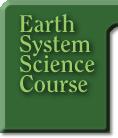Week
2: Yellowstone Sphere to Sphere Interactions
Below are some of
the sphere > sphere interactions that could have occurred
during the ESS analysis of the Yellowstone forest fires event.
Pay attention to
how the "Why?" or "How?" for the
interactions is made visible in the examples below. Make the
“why” and “how” visible in your interactions by
including, “What you really believe to be true, ‘I
think...’” supported by reasons, “Because...” and,
when possible, including "These reasons come
from..."
Lithosphere
and Biosphere
L > B
Burned
plant debris that did not blow away becomes the new soil
that can provide some nutrients for pioneer plants. By
comparison,
gardeners prepare their soil with ashes from a fireplace.
B > L
A
decrease in vegetation may have resulted in increased
erodibility of
soil because there were fewer roots to hold the soil
in place. In the area where I live, the roots from good
plant cover appear
to help keep the topsoil from washing away
during heavy rains.
Lithosphere
and Hydrosphere
L > H
Erosion
increases from runoff following the fire and changes the
turbidity, temperature, and pH of the streams and rivers. A
similar
circumstance occurs in the strip mining areas near where
I live. Following hard rains, the nearby streams become
very muddy. An article in the local paper said such "erosion
and drainage creates acidic conditions in the streams."
Lithosphere
and Atmosphere
L > A
Blackened
areas can absorb heat faster, increasing the rate of
convection in cells. An increase in convection may move air
masses through a
burned area quicker and/or cause moist air
to move vertically faster, increasing rain further downwind.
A > L
Ash
particles in the air could have been carried by the wind
and dropped on the
ground miles away from the forest fires; the
ash particles--which have a high pH--could have changed
the pH of the
soil.
Atmosphere and
Hydrosphere
A > H
Ash may
be carried by winds many miles from the fire and then
dropped into streams. A similar thing happens when ash
from an erupting
volcano is carried by the winds to other regions.
A > H
There
may have been more precipitation in neighboring areas
because ash
particles in the air could have become condensation
centers upon which raindrops could form.
Atmosphere and
Biosphere
A > B
Smoke and noxious fumes could have coated the lungs of
animals and
people, affecting their ability to breathe.
A > B >
E
I read that more than eight weeks of warm to hot, low humidity
air masses drew moisture out of grasses and trees in
Yellowstone National Park prior to the 1988 fires.
Biosphere and
Hydrosphere
B > H
Destruction
of waterside habitat (and cover) can raise water temperatures
because the ponds and streams are exposed to
more radiant energy from the sun.
[ Back
to The Integration of the ESS Analysis
and the PBL Model ]
[ Go to Yellowstone
Event to Sphere Interactions ]
[ Go to Yellowstone
Causal Chains ]
[
Back
to Outline ]
[
Home ] [ Intro
] [ Guide ] Outline [ Classroom
]
HTML code
by Chris Kreger
Maintained by ESSC Team
Last updated July 27, 2000
Privacy
Statement and Copyright©
1997-2000 by Wheeling Jesuit University/NASA Classroom of the Future™. All
rights reserved.
|



